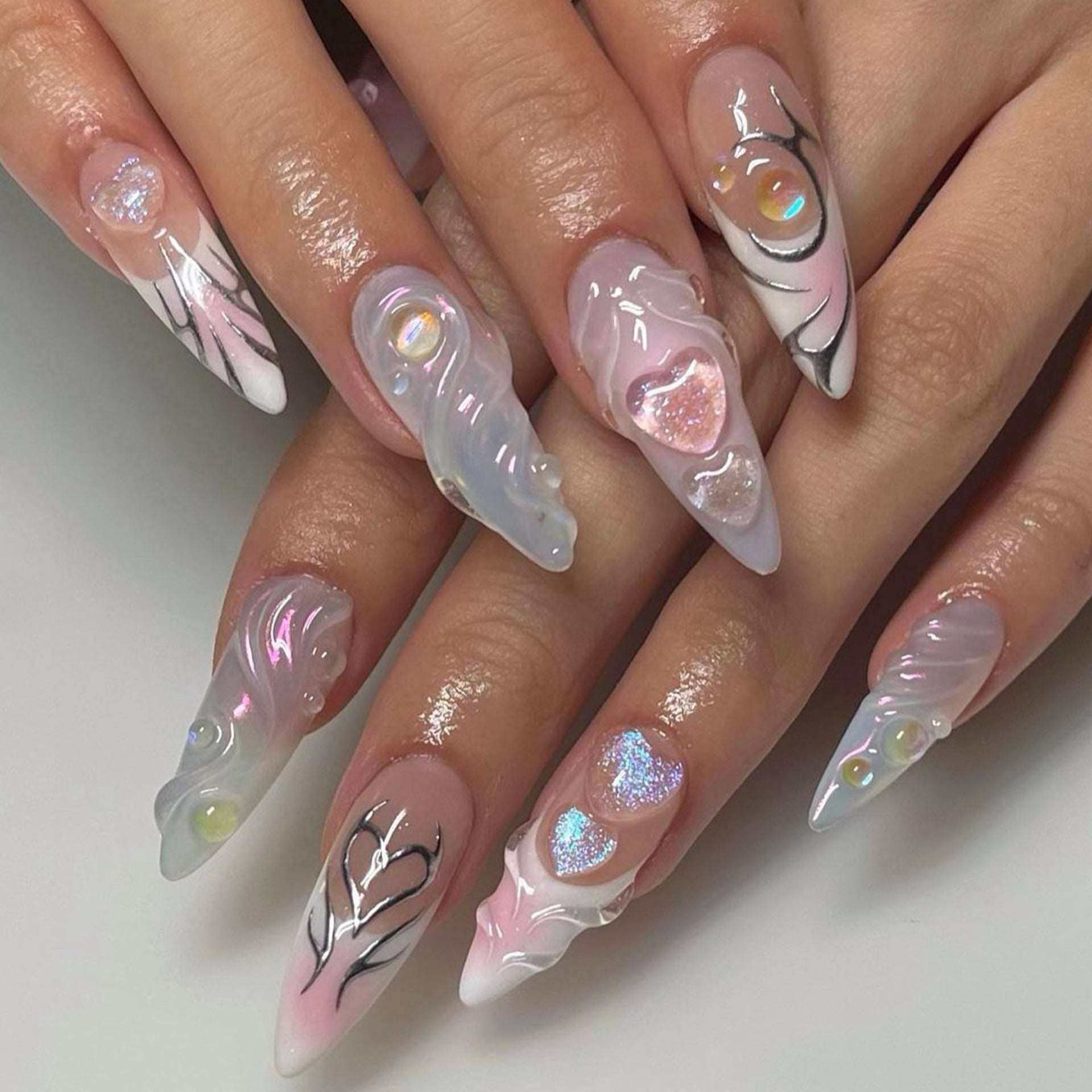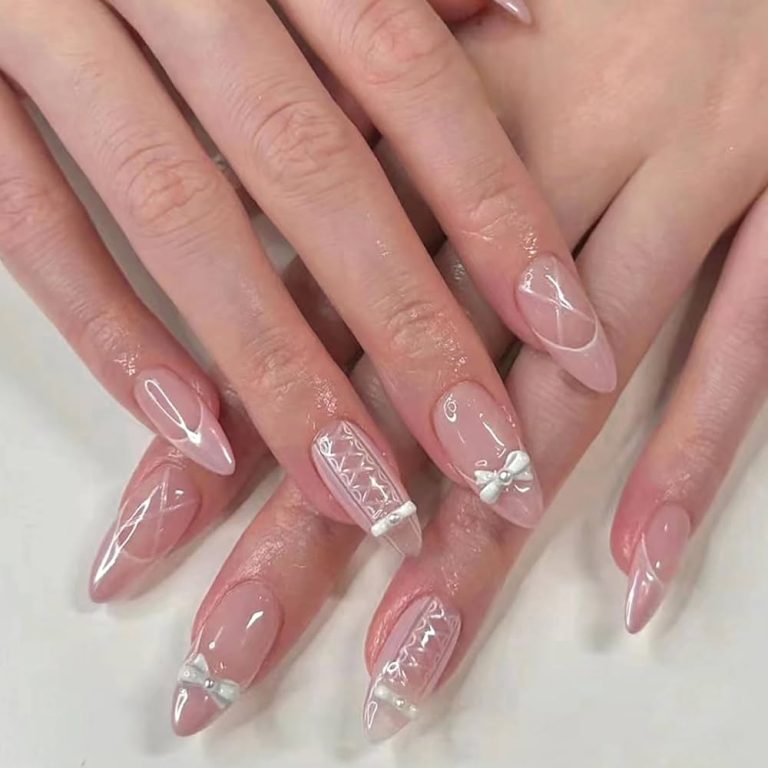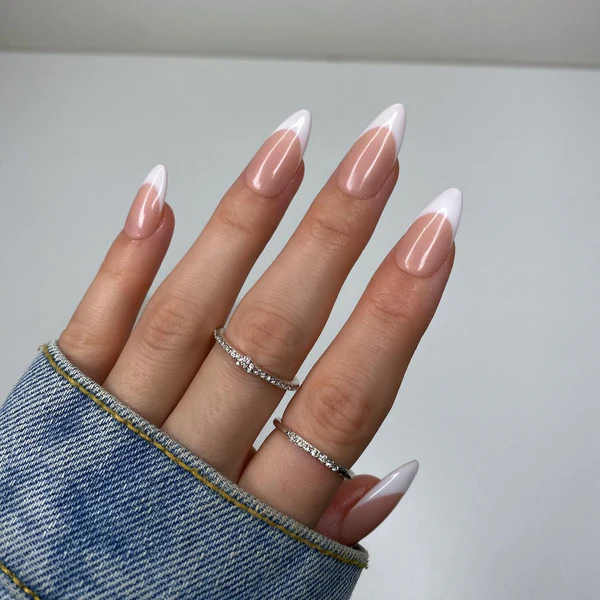
Soothing Your Acrylic Nail Pain: Effective Tips
Initial Discomfort: Why Acrylic Nails Can Hurt
Acrylic nails bring beauty at a cost. At times, this cost comes in the form of discomfort or pain. Many people report feeling some level of pain after getting acrylic nails, and it’s not unusual to wonder why.How to relieve pain from acrylic nails? Let’s explore the key reasons behind this initial discomfort.
Poor Application Practices
One of the main culprits for nail pain is poor application. If the nail technician is inexperienced or applies too much pressure during the process, it can lead to pain. They may also apply the acrylics too thickly, putting extra weight on your natural nails which you’ll notice when performing daily tasks.
Excessive Filing and Cuticle Trauma
The preparation of your natural nails often involves filing and cuticle work. Over-filing can thin the nails excessively, exposing sensitive layers. Similarly, aggressive cuticle cleaning can lead to pain, especially if live skin is accidentally plucked.
The Tightening Sensation
As the acrylic hardens, some might feel a tightening sensation on their nails. For those new to acrylics, this unfamiliar feeling may be interpreted as pain. For most, this feeling fades as they become accustomed to their new nails.
Individual Reactions to Materials
Some discomfort can come from your body’s natural reaction to foreign materials. You might have sensitivities or even allergies to components in the nail glue or acrylic mixture.
Adjusting to the Length and Weight
Longer nails can also cause discomfort. Their added length and weight might be too much for someone not used to them, causing pain during everyday activities.
Understanding these factors can help you be more prepared for your next nail session. Talk openly with your nail technician about any pain during the process. Together, you can work towards a more comfortable experience. After all, beauty should be a pleasure, not a pain.

The Role of Nail Preparation in Acrylic Nail Pain
Preparation is key before acrylic nails are applied. How to relieve pain from acrylic nails? Nail technicians file down natural nails to help acrylics adhere better. However, this step can cause discomfort or even pain. Here’s how nail preparation factors into the pain equation:
- Overzealous Filing: Filing creates a rough surface for the acrylic to bond. If done too aggressively, it can make the nails too thin. Thin nails mean exposed nail beds, leading to increased sensitivity and pain.
- Cuticle Handling: Pushing back cuticles creates space for the acrylic. But if cuticles are handled roughly, this can lead to soreness. Cuticle work should be gentle to avoid pain.
- Nail Plate Exposure: The filing process exposes more of the nail plate. This makes it more vulnerable to pressure and can cause a sharp pain when touched.
- Pre-Application Cleansing: Any harsh chemicals used to clean the nail can dry out the nail bed. Dry nails can become brittle and more prone to pain.
Proper preparation should strike a balance. It must roughen the nail surface enough for the acrylic to stick without causing undue damage or pain. Using the right tools and techniques can minimize discomfort during this phase. If you feel pain during nail preparation, it’s important to speak up. A good technician will adjust their methods to keep you comfortable. And remember, high-quality products can reduce the risk of pain from acrylic nails.
The Impact of Acrylic Nail Application Technique
The way acrylic nails are put on plays a big part in whether they hurt. How to relieve pain from acrylic nails?A skilled nail technician knows to be gentle and precise, which can prevent a lot of pain. If they press too hard or use the wrong amount of acrylic, it can lead to discomfort during and after the appointment.
Here are a few technical aspects that can impact the level of pain:
- Pressure Application: Too much pressure when attaching the acrylic can cause pain right away.
- Acrylic Thickness: When the acrylic layer is too thick, it puts extra weight on the nails. This can cause an ache as you use your hands.
- Glue Use: The right amount of nail glue is important. Too much can spread onto the skin and cause a burning feeling.
- Nail Length: Extra long nails can lead to pain because of their weight and how they might bump into things.
- Curing Process: When acrylics cure or harden, they might tighten on the nails. This can feel painful at first.
Choosing someone who knows how to apply acrylics well can help avoid pain. Good technique means less pressure, just enough acrylic, and careful use of glue. It can also be helpful to choose a shorter length to reduce the chance of discomfort. And remember to talk to your nail tech if you feel any pain; they can adjust their technique. It’s important for your nails not only to look good but also to feel good.

How Natural Nail Health Affects Acrylic Nail Pain
The health of your natural nails plays a crucial role in how you experience pain with acrylics. How to relieve pain from acrylic nails?Weak or damaged nails can make the pain worse. Here’s why good nail health is important and how it affects your experience with acrylic nails:
- Strength of Natural Nails: Strong nails handle the pressure from acrylics better. Weak nails might bend or break, causing more pain.
- Moisture Level: Dry nails are more prone to breaks and cracks. This can lead to pain when applying and wearing acrylic nails. Keeping nails hydrated can minimize this issue.
- Overall Nail Health: Healthy nails recover faster from any stress caused by acrylics. They are less likely to feel sore post-application.
Focus on maintaining good nail health. Use hydrating lotions and avoid harsh chemicals. This preparation ensures a more comfortable experience with acrylic nails.
Managing the Pain: Short-term Relief Solutions
If your acrylic nails hurt, you’ll want quick relief. Here are some tips for short-term solutions to manage the discomfort:
- Apply Cold Compresses: A simple yet effective method. Press a cold pack gently over your nails to reduce pain and swelling.
- Take Over-the-counter Pain Relievers: Medications like ibuprofen can ease the pain. Remember to follow the dosage instructions.
- Keep Hands Elevated: Raising your hands can lessen swelling and throbbing in your fingers.
- Avoid Pressure on Nails: Be gentle with your hands. Avoid tasks that put pressure on your nails for a few days.
- Use Cuticle Oil or Moisturizers: Keeping the nail area moisturized can help with sensitivity and prevent further pain.
- Wear Gloves for Protection: When doing household chores, gloves can protect your nails from knocks and chemicals.
- Dip Fingers in Cold Water: If the pain is intense, soaking your nails in cold water may provide immediate relief.
These methods can bridge the gap until you adapt to your new nails or decide to have them removed. Always pay attention to your nails; if the pain persists, consider consulting a professional.

Preventative Measures for Acrylic Nail Pain
To avoid acrylic nail pain, consider these preventative steps:
Select a Reputable Nail Technician
Choose a skilled technician with positive reviews. Their experience minimizes mistakes and reduces pain.
Prioritize Nail Health
Before getting acrylics, maintain nail strength through proper nutrition and hydration. Strong, healthy nails are less likely to hurt.
Use High-Quality Acrylic Materials
Opt for quality over cost. High-quality acrylics and glues are less likely to cause allergic reactions or irritation.
Speak Up During Application
If you feel pain during application, tell your technician. They can adjust the pressure and technique accordingly.
Start with Shorter Nails
Long nails add weight and can be painful. Begin with a shorter length to help your nails adjust.
Regular Moisturization
Keep nails and cuticles moisturized with oils or lotions. This prevents dryness and reduces the risk of pain.
Consider Your Lifestyle
If you’re active or use your hands a lot, shorter, more practical nails might be a better choice.
Opt for a Sensitivity Test
If concerned about allergies, request a patch test with the products. This can prevent discomfort later on.
Remember, being proactive about your nail care routine can significantly reduce the chances of experiencing pain from acrylic nails.
When to Seek Professional Help for Acrylic Nail Pain
It’s crucial to know when to seek professional help for acrylic nail pain. While discomfort after application is common and often fades, persistent or severe pain is a red flag. Here are instances when you should consider professional intervention:
- Pain Lasting More Than Two Days: Acrylic nail pain should subside within a day or two. If pain persists, see a technician.
- Swelling, Redness, or Infection Signs: Any signs of infection like redness, swelling, or pus around the nails demand immediate attention.
- Severe Pain or Sensitivity: Acute pain that stops you from daily activities is abnormal. Don’t ignore this level of discomfort.
- Allergic Reactions: If an allergic reaction to the acrylic or glue is suspected, seek medical help. Symptoms may include itching, redness, or blisters.
- Nail Damage: If you notice any injuries to your natural nails or cuticles, it’s essential to get professional care to prevent further damage.
- Pain When Pressing on Nails: If pressing on your nails causes sharp pain, it may indicate the acrylic is applying too much pressure on your nail beds.
Safety should always come first. Consult with your nail technician or a dermatologist if you experience any of these symptoms. Remember, while beauty enhancements are desirable, they should not compromise your well-being.

Making the Right Choice: Alternatives to Acrylic Nails
If acrylic nails cause you pain, there are other options to consider. How to relieve pain from acrylic nails?These alternatives can offer the beauty of enhanced nails without the discomfort. Here’s what you can explore:
- Gel Nails: Gel nails are applied like regular nail polish and cured under UV light. They are less harsh on the nails and don’t require the same filing as acrylics.
- Dip Powder Nails: Dip powder involves layering colored powder and a sealant on your nails. It’s less invasive and doesn’t involve heavy filing.
- Press-On Nails: Ready-made and easy to apply, press-on nails come in various styles. They don’t put pressure on your nail beds like acrylics.
- Natural Nail Enhancements: Products like nail strengtheners and hardeners improve your nails’ health. They are a pain-free way to gain strength.
- Fiberglass or Silk Wraps: These are thinner and lighter than acrylics. Wraps reinforce your natural nails without adding much weight or length.
Choose these methods to keep your nails looking great while avoiding pain. Try options that match your lifestyle and nail health for the best results. Speak with a nail technician about these alternatives during your next visit.

